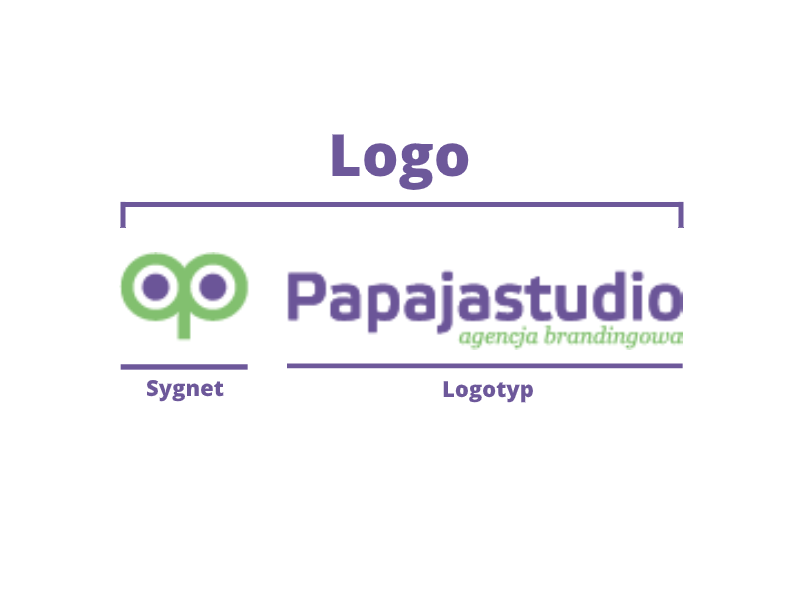In branding, it is often said that a logo is the face of the brand. It is something that creates an emotional bond with the audience, playing a crucial role in giving the brand its visual identity. Can the same be said about a logotype? Can both elements of visual identity be considered the same?
The terminology related to the identification system is becoming increasingly familiar. There is a growing awareness that a strong visual identity is a solid foundation for building a successful brand. The first element that often comes to mind is the logo, which is frequently—and incorrectly—used interchangeably with the term “logotype.” So, what are the differences?
Logo – the distinctive mark of the brand
A logo is a distinctive mark consisting of two elements: a graphic symbol, called a sygnet (which can sometimes become the brand’s icon, as with Apple or Nike), and a textual element, the logotype.
The graphic symbol, or sygnet, resembles a crest. Although small in size, when well-designed, it can convey the brand’s identity and remain memorable to the audience. It often accompanies the logotype but can also function independently, as demonstrated by brands like Apple or Nike.
Logotype – the textual representation of the brand name
A logotype is based on typography and represents the brand name through text using specific fonts. It can be part of a logo or function entirely independently (e.g., Zara, Reserved, Coca-Cola).
The success of a logotype depends on how well the typographic style aligns with the brand’s identity. For example, bold black letters may evoke solidity and stability, while colorful or italicized letters might convey a freer, more relaxed vibe.
A logotype stands out due to its original typography that matches the brand’s identity, unique text composition, color palette, spacing, and font format.
Logo or logotype? Which to choose?
Both the logo and logotype aim to identify the brand and distinguish it from others. Their purpose is to help express the brand’s individuality, build its visual identity, and guide the audience toward the brand’s priorities.
Some companies have a clear preference for either a logo or a logotype. Those that haven’t made a decision can rely on a professional branding agency, which can help determine the best solution during a briefing.
Being aware of the differences between a logo and a logotype is important. As Angus Hyland said: “If logo once meant the same as logotype – it no longer does.” Understanding this facilitates communication between the client and the branding agency and helps define expectations and needs for the project. For those interested in how to design a logo, see our related article on the topic.





